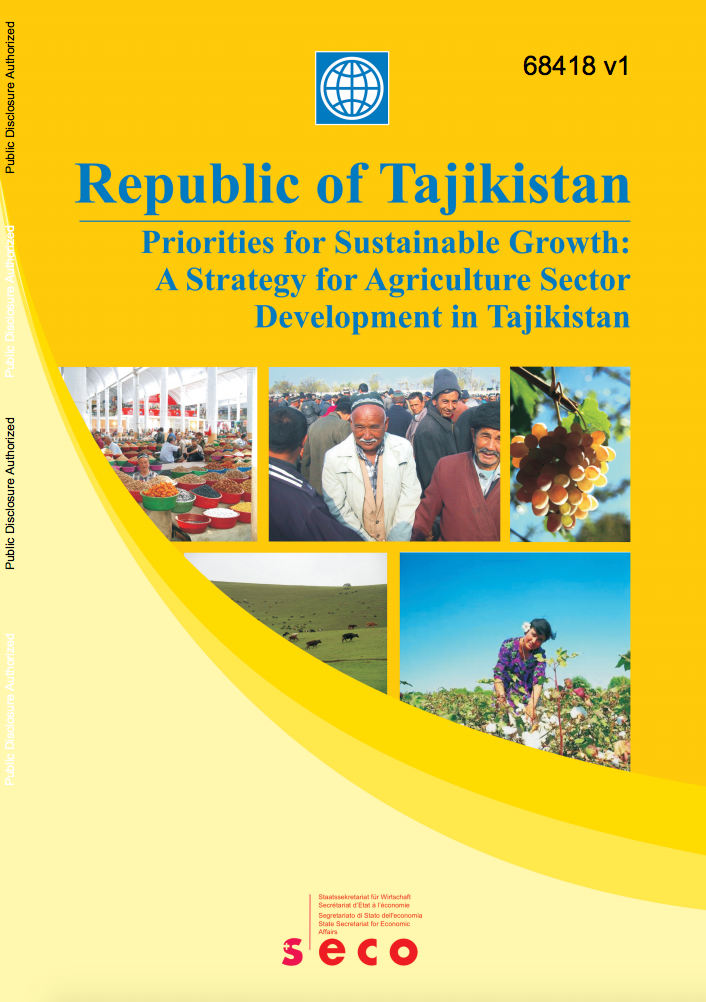The World Bank is a vital source of financial and technical assistance to developing countries around the world. We are not a bank in the ordinary sense but a unique partnership to reduce poverty and support development. The World Bank Group has two ambitious goals: End extreme poverty within a generation and boost shared prosperity.
- To end extreme poverty, the Bank's goal is to decrease the percentage of people living on less than $1.25 a day to no more than 3% by 2030.
- To promote shared prosperity, the goal is to promote income growth of the bottom 40% of the population in each country.
The World Bank Group comprises five institutions managed by their member countries.
The World Bank Group and Land: Working to protect the rights of existing land users and to help secure benefits for smallholder farmers
The World Bank (IBRD and IDA) interacts primarily with governments to increase agricultural productivity, strengthen land tenure policies and improve land governance. More than 90% of the World Bank’s agriculture portfolio focuses on the productivity and access to markets by small holder farmers. Ten percent of our projects focus on the governance of land tenure.
Similarly, investments by the International Finance Corporation (IFC), the World Bank Group’s private sector arm, including those in larger scale enterprises, overwhelmingly support smallholder farmers through improved access to finance, inputs and markets, and as direct suppliers. IFC invests in environmentally and socially sustainable private enterprises in all parts of the value chain (inputs such as irrigation and fertilizers, primary production, processing, transport and storage, traders, and risk management facilities including weather/crop insurance, warehouse financing, etc
For more information, visit the World Bank Group and land and food security (https://www.worldbank.org/en/topic/agriculture/brief/land-and-food-security1
Resources
Displaying 2881 - 2885 of 4907Moving Up the Value Chain : A Study of Malaysia's Solar and Medical Device Industries
This report responds to a request by the
Government of Malaysia to examine how Malaysia can move up
the value chain in the solar and medical device industries.
Through the lens of long-term development, the overall
growth performance of the Malaysian economy has been a
resounding success story. The Commission on growth and
development listed Malaysia as one of only 13 countries that
registered sustained growth of 7 percent or more for a
Priorities for Sustainable Growth : A Strategy for Agriculture Sector Development in Tajikistan
Agriculture sector growth has made a
powerful contribution to post-war economic recovery in
Tajikistan, accounting for approximately one third of
overall economic growth from 1998 to 2004. Sector output
increased by 65 percent in real terms during this period,
and has now returned to the level extant at independence in
1990. Total Factor Productivity (TFP) has also increased, by
3 percent per year. Despite this progress, there is
Priorities for Sustainable Growth : A Strategy for Agriculture Sector Development in Tajikistan, Technical Annex 2. Cotton Sector in the Global Context
Agriculture sector growth has made a
powerful contribution to post-war economic recovery in
Tajikistan, accounting for approximately one third of
overall economic growth from 1998 to 2004. Sector output
increased by 65 percent in real terms during this period,
and has now returned to the level extant at independence in
1990. Total Factor Productivity (TFP) has also increased, by
3 percent per year. Despite this progress, there is
Bangladesh - Towards Accelerated, Inclusive and Sustainable Growth : Opportunities and Challenges, Volume 1. Overview
In Bangladesh, growth needs to
accelerate to absorb the burgeoning labor force and continue
making dents in poverty. Such acceleration will require
sustained growth in exports and remittances. It will also
need an increase in investment both public and private.
However, growth acceleration alone will not be enough to
absorb the labor force. This will need an improvement in
employment intensity of growth, and a further improvement in
Sudan : Overview of the Urban Landscape
This study responds to the need for
information and analysis on the urban sector in Sudan, to
inform the Bank's policy dialogue with the Government
of Sudan (GoS) on urban and local government issues, and to
inform the design of future Bank assistance. The first phase
of this analytical exercise, which is the focus of this
report, develops an overview of the urban landscape. The
report is structured as follows: section two describes the







